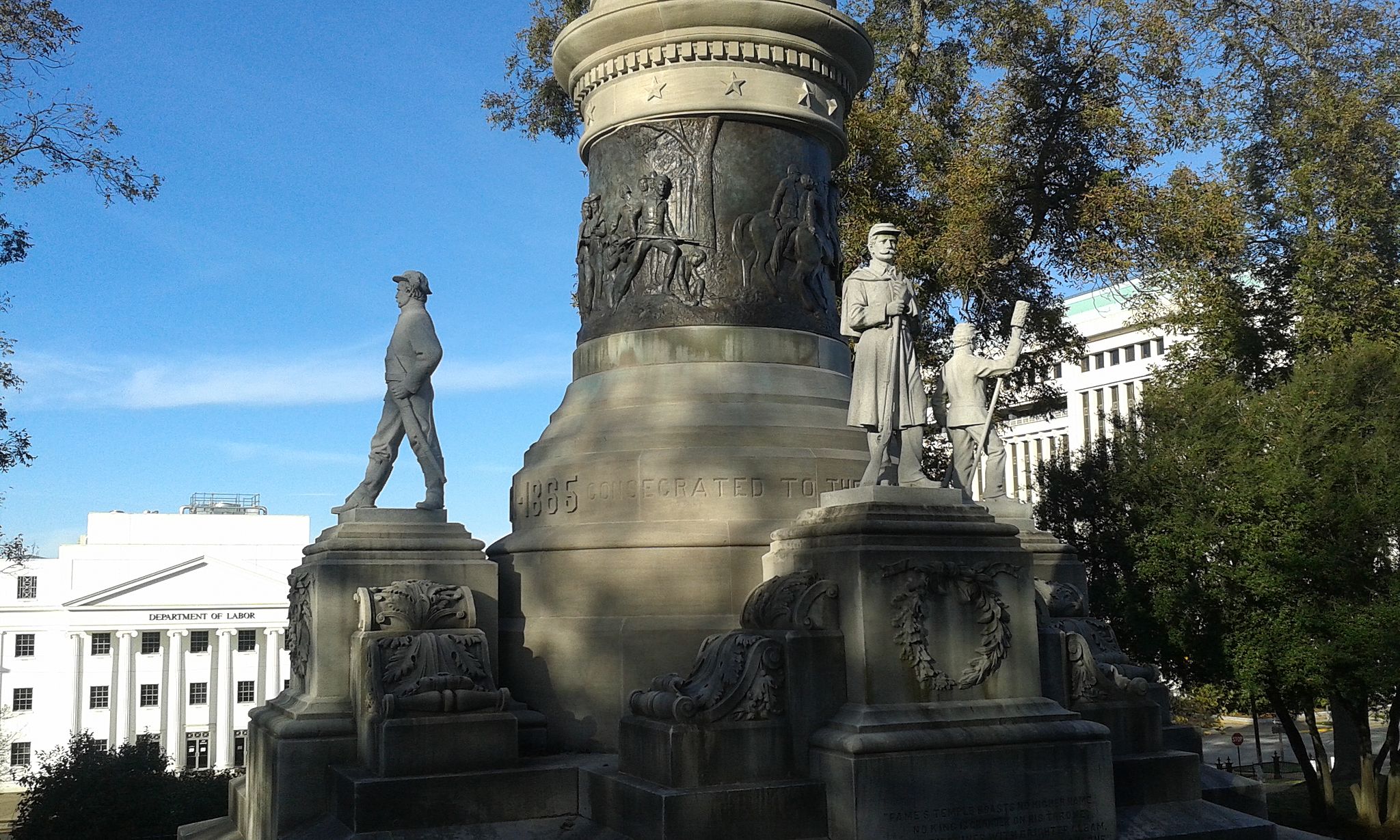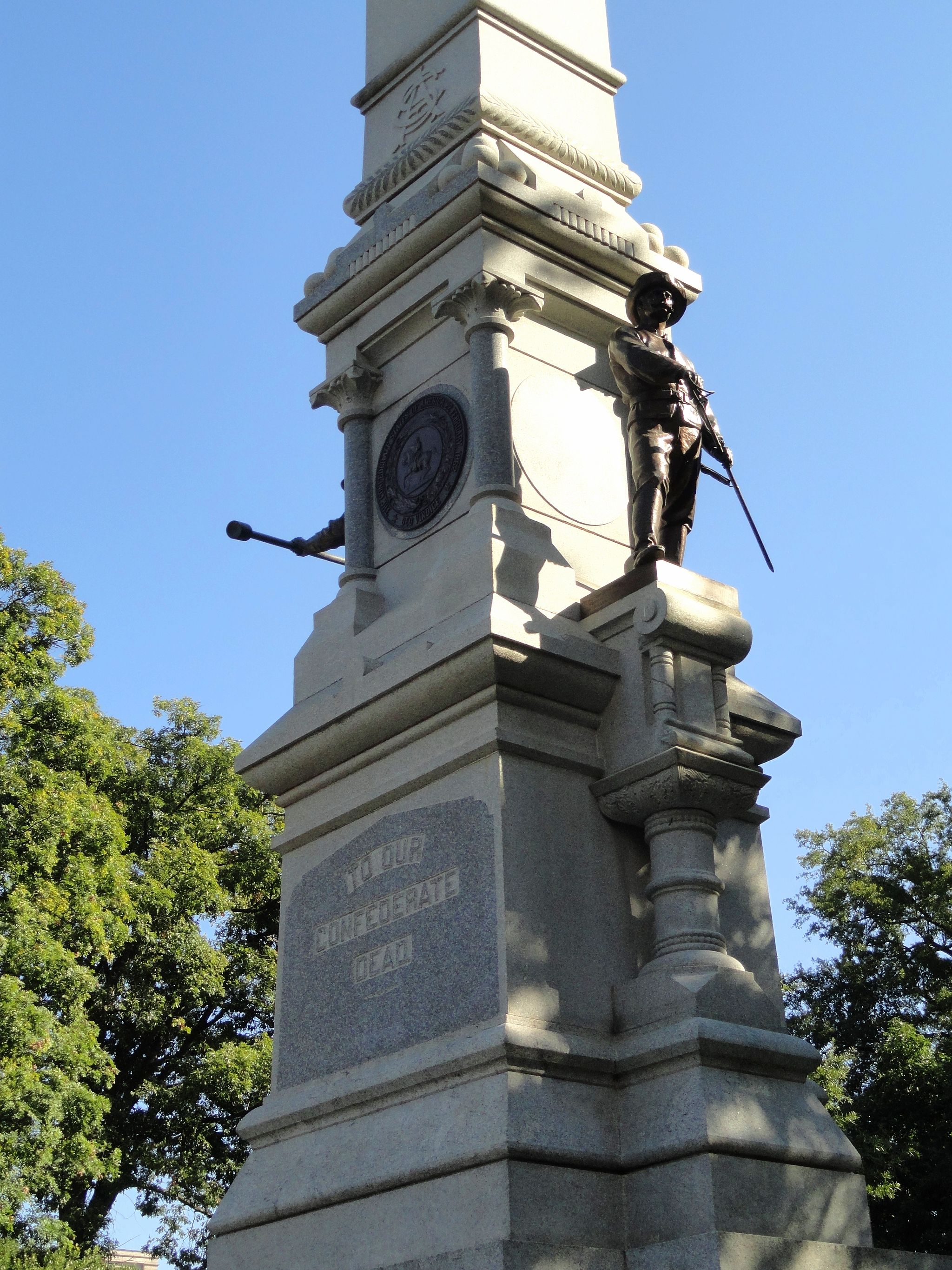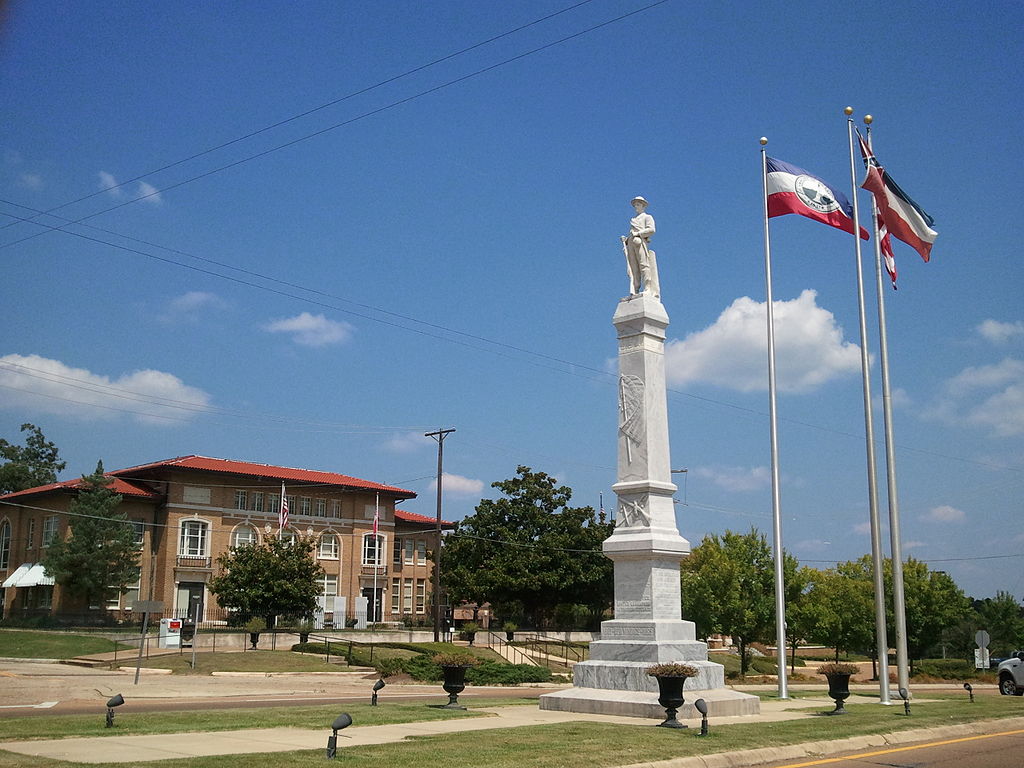Confederate flags have been flying off flag polls in recent years as an upswing in racist violence has rekindled conversation over the symbol’s bloody identity. But while state buildings and universities pull one symbol of the Confederacy, an absurd amount of others continue to stand on public grounds.
“So many of those statues are about rewriting history themselves, and rewriting the cause of the Confederacy to be a glorified cause and something that is worth commemorating,” Alex Amend, Director of Research for the Intelligence Project at the Southern Poverty Law Center told VICE Impact
Videos by VICE
The Southern Poverty Law Center estimates that there are more than 1,500 public Confederate symbols nationwide, and while this number has dramatically dropped since the 1960s, there’s still a ton to be done. New Orleans made waves last month as the city voted to remove four Confederate monuments, but many cities are still fighting against stifling state laws to remove public monuments reflecting a Confederate identity.
“It’s bad for local democracy, and I think kind of insulting to communities who should have the right to decide what their cities, their communities, their municipalities, celebrate and treat as their own history and their own heritage,” Amend said.
Here are four state governments who have put the legal breaks on the removal of Confederate monuments and namesakes from public spaces.
Alabama
Alabama is the most recent state to join the monument protection party with the signing of the Alabama Memorial Preservation Act of 2017 on May 25. Like some of its peers, the bill doesn’t explicitly name protections for Confederate-era monuments, but it does give a big “no” to the movement of any historical monument over 40-years-old without petitioned approval. That rule also applies to the renaming of “memorial schools” which were named or dedicated in honor of a military service over 20 years ago. (Not a great look for a state who has been accused of “modern day segregation” for their number of failing predominantly black schools.)
The Southern Poverty Law Center estimates that there are 48 Confederate-era monuments and public statues spread throughout the state, and that number mega-jumps to 107 when you add in municipalities, schools, and other public institutions. (Example: there’s both a Robert E. Lee High School and Jefferson Davis High School in Montgomery alone.)

“It’s not about protecting discrimination. It instead makes sure that we don’t forget our mistakes so that we can be sure to learn from them,” Daniel Sparkman, Deputy Press Secretary to the office of Alabama Governor Kay Ivey, told VICE Impact. “When negative aspects of our history are repeated it is often done because we scrub the effects of the past from our memory. So this legislation ensures that both the good and the bad of our past are remembered, so we are able to enlighten our future.”
North Carolina
Buried between clauses on the treatment of state and national flags and the handling of historical documents, the Cultural History Artifact Management and Patriotism Act of 2015 requires the ol’ thumbs up from the North Carolina historical commission before a state-owned monument, memorial, or work of art can be moved. More specifically, the bill goes pretty in depth to bar the removal or relocation of a so-called “object of remembrance.”

“An object of remembrance that is permanently relocated shall be relocated to a site of similar prominence, honor, visibility, availability, and access that are within the boundaries of the jurisdiction from which it was relocated,” the 2015 bill reads. “An object of remembrance may not be relocated to a museum, cemetery, or mausoleum unless it was originally placed at such a location.”
The Southern Poverty Law Center gives North Carolina the dubious distinction of being in the number four slot for “most proven to display a symbol of the Confederacy in a public place” with 90 monuments in-total.
Tennessee
Updates to a 2013 law are making the removal of controversial monuments extra tricky in Tennessee. The original bill required a majority “get it outta here” vote from Tennessee’s historical commission, but an updated version of the bill, which was passed last year, replaces the majority vote with an intense process including public notice, multiple hearings, and a two-thirds vote of approval. Paperwork: meet wait time.
“In 2013 it came to my attention that the responsibility of some monuments, especially those dedicated to the South and the Confederacy were in danger of being moved for no good reason,” Sponsor of the Tennessee Heritage Protection Act of 2016, Rep. Steve McDaniel, told VICE Impact. “Generally speaking, history is history and for us to try to change the past by removing monuments and symbols is ludicrous. But we live in a country where we try to listen to all sides of the issue, so in Tennessee, we’ve created a process where by people will have a voice in whether something should be there, or should not be there.”

The bill is also more direct than some of its monument-protecting counterparts, specifically prohibiting the movement of a monument or other public symbolic item named or dedicated in honor of a military conflict. This extends to the renaming of schools, parks, and other public sites, too.
Mississippi
Earlier this year, Mississippians voted in overwhelming favor to keep their state flag — stars, bars, and all — making it not only the hardest state to spell, but the last in the nation to officially fly a Confederate symbol.
Knowing that, it may come as little surprise that the state bars the removal of monuments and other symbols from any war, unless they’re moving to an equally prominent spot or literally obstructing the flow of traffic.
While most states have been beefing up monument restrictions in recent years, Mississippi has played the long game. Mississippi Code of 1972, Title 55 on Parks and Recreation, prohibits the movement of monuments from a series of named wars, including “Any Revolutionary War.” Although the original code is 45 years old, it’s still current as of this year’s Regular Session.

To learn more about the public legacy of the Confederate era, check out the Southern Poverty Law Center’s map of Confederate symbols and related data in their “Whose Heritage?” report. Local NAACP chapters are also fighting for movement, most recently calling for the removal of six public Confederate monuments in Arizona. You can also follow grassroots groups like Take ‘Em Down NOLA, who are fighting for expedited removal of public Confederate monuments in states without strict legal protections.




